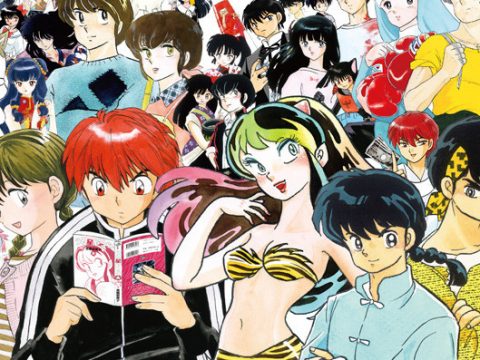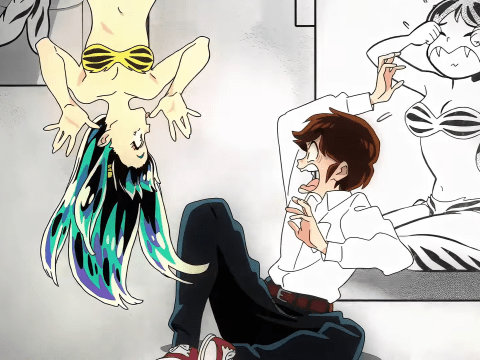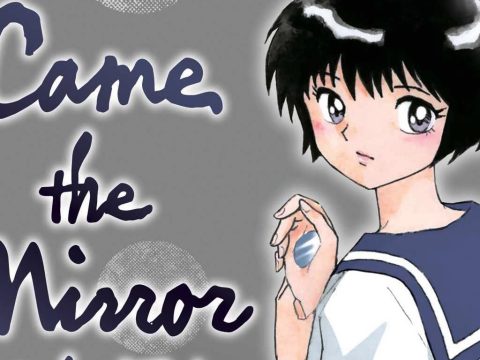Michael Sinterniklaas is no stranger to the world of voice acting. Founder of New York-based recording studio NYAV Post, Sinterniklaas is well-known not just as the voice of American cartoon characters like Leonardo in Teenage Mutant Ninja Turtles (2003 TV series) and Dean Venture in The Venture Bros, but also as voice actor and director on countless anime titles, playing such characters as Leo in Fullmetal Alchemist, Kenji in Summer Wars, and the Netherlands in Hetalia: Axis Powers. Recently, he’s been at the forefront of attempts to bridge the gap between East and West, teaming up with Japanese animation studio Sunrise to produce an unprecedented simultaneous worldwide English dub for Gundam Unicorn.
In-person, Sinterniklaas was endlessly excited, and spoke without reservation about anything that caught his fancy. While I was setting up the recording equipment for the interview, he made several off-the-cuff, MacGyver-like suggestions to improve recording quality. They weren’t suggestions, per se. More like playful-yet-realistic ideas born from his years of experience in the industry, and I started to get the sense that this was simply how he goes about doing just about everything.
In this interview, conducted at Nan Desu Kan 15, Sinterniklaas talks about the future of anime dubs and simulcasting, the differences between recording voice work domestically and overseas, and some of his favorite shows from anime history.
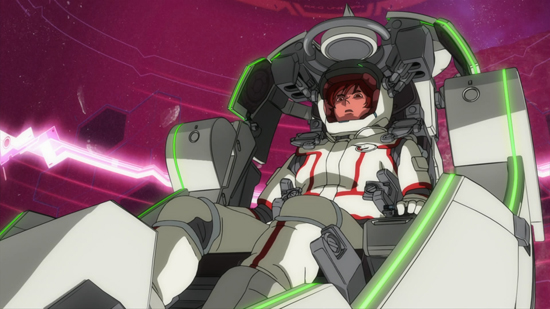
GUNDAM UNICORN ©SOTSU, SUNRISE
Moses: There’s streaming now, simulcasts, and you’re kind of there at the forefront, handling the dub for Gundam Unicorn which is a worldwide, simultaneous release. Where do you see the industry going in the next couple of years?
Sinterniklaas: It took me about 5 years of going to Japan and trying to convince producers that a simultaneous release was possible. Everyone recognized the value of it, but they didn’t think it was possible. That comes largely from anime in Japan being notoriously, like… “Aaah!” Running the tape down to the network at the last second before it goes on that day.
So they were saying “we’re barely making it on the air. How are you going to make a dub on the same day?” We worked it out. The first experiment we had in doing that was another Sunrise show called Kurokami, and it was really, really hard. We had 26 episodes, and they were day-and-date, same day, same time. I mean, the time difference bought us, y’know, a few hours, but…
There are a lot of challenges for the industry. I own a studio, I direct, I produce, I deal with licensors and distributors, and I always want to see what’s going on. Keep my finger on the pulse. I ask people when I do panels at conventions what matters to them. What do you like, do you want extras or not, that kind of thing. Before the illegal downloading thing became so rampant, they would say “I know that it’s wrong, and it might be stealing, but I don’t want to wait a year for a show that’s right there. I’ll buy it when it comes out!”
And as more and more fans started to get introduced to the idea of anime as a free service, it sort of trained new fans to expect that. If you make the parallel between eating at a restaurant and just running out on the check, it’s slightly different but… really it’s not.
Part of the responsibility is on the industry as well. It’s tricky to monetize in a new way, tricky to figure out how to make more money online, but it’s really, really hard. The margins you get from licensing, whether it’s a sponsored YouTube channel or Crunchyroll, is minuscule compared to selling hard copies of anything. Luckily for some shows, collectors still want to have a physical thing, and when we go to conventions we get to sign them. That’s great, but of course the industry has taken a huge, huge hit as a result of that shift away from physical media.
Moving forward, I’ve spoken to producers in Japan, and I know one thing they’re trying to do is crack down more on piracy, but I… Y’know, it’s tricky. On the one hand, I want to believe that it’s really not the audience’s fault for not knowing, because sometimes when you watch something on YouTube it’s illegal, and sometimes it’s not. Kurokami was available in its entirety on Bandai’s YouTube channel for free. That’s legit, and yet next to it are links to things that are not legit. It’s tricky, and it really is incumbent on the industry to find a way to get it out in a way that pays them back.
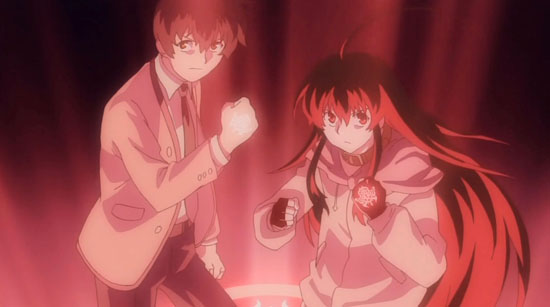
At the same time, I’ve seen a lot of blog posts where fans are just angry at the concept that they shouldn’t just have it for free. They don’t feel they’re doing any damage. If they copy something, they’re not taking it away from the producer. But taking the sale away is doing damage. Unfortunately, I’ve been to Japan a lot lately, and producers of massive shows, shows that more people downstairs are cosplaying than anything else, aren’t making their money back.
One of the problems moving forward is, Japan’s losing a lot of talent. The country’s great creators are moving on to other industries where they’ll actually get some benefits and get paid more than 20 grand a year. Animators in Japan might make more than 20 grand a year. Less. Sometimes more. But a lot of times less. And every time I’ve gone on a studio tour, people are asleep under their desks, they can’t go home because they’re working like slaves, they can’t make enough money to live in Tokyo. It’s a really, really hard life. Japanese broadcasters are putting less on the air, and directors and scriptwriters are moving on to video games, or elsewhere. I heard about one guy who went on to Starbucks because they had a really good benefits package and they paid more than being an animator. That guy created a show I was a fan of. That bummed me out.
So like, it’s not just a problem for whiny-ass dubbing studios. It’s a problem for Japan. And the relevance for distributing internationally is, y’know, whereas shows used to be self-sufficient… Like so many industries around the world, we’re dependent on each other now, and a lot of Japanese studios depend on their international sales to complete the show they’re working on domestically. Without the foreign sales, it just falls apart. So we’re seeing a lot more shorter, or not as detailed shows happening. And a lot more safe bets.
It’s like when the Dreamcast was crushed by Sony’s marketing machine! And you had less experimental games. Code Veronica would never have happened. Jet Grind Radio? Samba de Amigo, right? For me, I’m a creative person, and I think the ability to create is paramount. I think it’s great to have, say, cheap DSLRs with incredible video. Even… even Garage Band and the stuff they used to record Rhianna’s… Anyway, I like all of that technology, but now there’s less risk happening. It’s really sad.
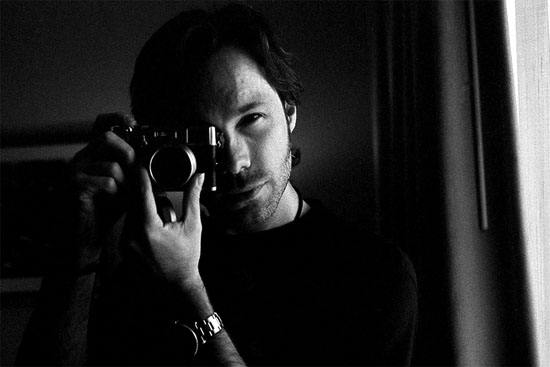
Sinterniklaas also happens to be an avid photographer, and had some excellent ideas that took advantage of the interview room’s layout and lighting. Photo by Matt Schley.
M: On a similar note…
S: Another downer?
M: I hope not! You mentioned the difficulties in getting shows dubbed. One of the first anime dubs I ever heard you in was a little show called GaoGaiGar…
S: (gasp)
M: …And the publisher of that, Media Blasters, released the first half of that show dub/sub, and the second half subtitle-only. Can you talk about the reasons behind that at all?
S: Yeah. GaoGaiGar. He is the King of Braves! I like the idea that you can turn a 2% chance into a 150% chance if you have balls of steel. It’s a good life lesson, not necessarily a good math lesson. I loved doing it even though it hurts to scream that much, and I was really psyched about it. Like all good Sunrise shows it starts off one way and ends in tears and blood.
And that part we didn’t get to see! The second half where it gets really cool. Media Blasters was basically like, “we don’t sell anything!” and the opinion of the industry has become—especially them—“hey, if the audience just wants to download the fansub, then why should we spend so much money trying to compete with that? The audience puts up with fan translations that are barely correct, so why would they pay to watch a dub?”
My opinion has always been that dubs bring in new people, we have to grow the audience, and if the audience now isn’t paying for it, it’s gonna die unless we find new people who don’t expect to be downloading things HD, free, all the time. I’ve actually heard people say “this is BS! I’m not going to watch this free stream! It’s only standard def!” Y’know, back in my day…
“Back in my day, we had no subs! And! Back in my day, when you bought an anime, it was $30 for two episodes on VHS, and you had to choose dub or sub!”
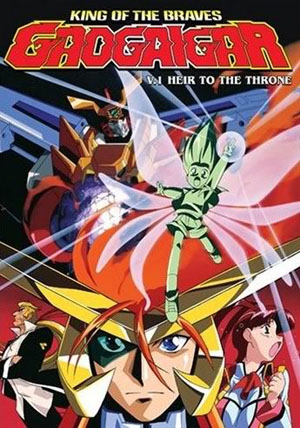
M: If you even had that choice.
S: If you even had that choice! And there was so little of it out there. Okay, back to the question. I actually recently spoke to John Sirabella over at Media Blasters about GaoGaiGar, by which I mean “G-G-Guh, G-G-Guh GaoGaiGar”. And he was like “hey, if people start buying it, we’ll do it. If there’s money there, we’ll do it. But if no one wants to buy it…” And I meet people at conventions who will rage at me, “why didn’t you finish it?!” Yeah, like it’s my call. Because I made that happen.
Anyway, I’d love to finish it. It should be seen in its entirety by people who might not pick it up subbed. And there are people now who actually do watch the dubs, so. My advice, if anyone wants to see it: just complain to Media Blasters and say you’ll buy it. Maybe Media Blasters, like Animeigo way back in the day, should do a preorder thing. “We’ll do it if we have 5,000 preorders.”
M: Like a Kickstarter?
S: Yeah. But the funny thing is, Robert Woodhead, the guy who runs Animeigo, did that kind of thing back in the ‘90s. Ah, it was another time…
M: You mentioned Animeigo at one of your panels the other day, kind of the history thereof. Bubblegum Crisis, for example, was one of the big titles that they published, you also mentioned Baoh – The Visitor, and–
Sinterniklaas: Baoh! Yeah! You remember Baoh?
M: I cannot forget Baoh. Are you aware of the dub of Baoh? Have you seen that? It’s reached cult status at this point.
S: I am so aware of the dub of Baoh, for a number of reasons. First, it was handled by a good friend of mine, Scott Houle. But also because I loved that show. When I was in high school I rented a lot of video tapes from Tokyo Video, just off of Times Square. They had some guy there who had taped it off of Japanese TV, and that’s where we saw Iczer One and Bubblegum Crisis. A lot of shows. Anyway… pardon me, I’m just eating this delicious gluten-free brownie that I’m completely addicted to.
M: For people who have never seen Baoh before, can you talk a little bit about what was so special about it, or at least that dub in particular?
S: Well, Baoh is a biological weapon, a parasite. When the host is in danger and near-death (you can’t just flick it on, unfortunately, like so much Iron Man), the little squiddy, parasite-thing takes over the host’s body, turns him into a badass fighting machine. His hair shoots out like needles, and he’s got blades on his arms that he can cut things off with — including his own arms — and he’s unstoppable, just an uber badass. Great show.
Anyway, at the time Animeigo was doing the dub for Baoh, they had hired two outside recording studios, and they were about to get into a third. Unfortunately, they had one of those other studios handle Baoh’s dub. Needless to say, I was super bummed out. I really wanted to work on that! I have heard a story, though, that one of the characters in the show was played a little more hammy than the director, Scott Houle, would have liked. And it turns out that was because of a very specific request that the client—Animeigo—had made to do this to that particular character.
That kind of thing happened a lot, actually. I will always be grateful to Robert Woodhead, who founded Animeigo and gave me my start in the industry. But every once in a while, Robert would come into the studio and want to do things his way, which is why Urusei Yatsura didn’t go beyond the couple of episodes that it did, and why some of the things in that Baoh dub ended up being, ah, extra special.
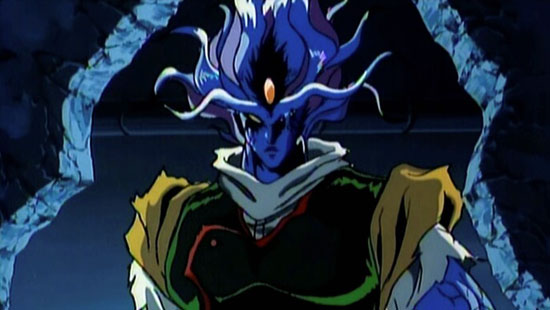
M: Can you talk about the differences between doing recording work at say, Astro Base GO!—the place that puts together The Venture Bros.—versus, say, the kind of recording you would do for an anime show?
S: Okay, so, Astro Base GO! is its own entity. It’s on the moon, as the name implies. Wait, no, it isn’t. It’s kinda near Chinatown. At the time I auditioned for the part of Dean Venture, I actually went to Noodlesoup, the animation production company behind Venture Bros., instead of Astro Base. I didn’t go there until… I remember singing our Christmas song… Was it the second Christmas? The Venture Bros. had been out, I think we did our song, “Let Them Know It’s Christmastime Again”… (sing-song) “Feed the world!”
And we sang that song in character, which was really fun to do, at the Astro Base. It’s not a recording studio. I mean, it’s a big, concrete, live space. [Venture Bros. co-creator Doc Hammer] has done some incredible things there, but it’s not a sound studio per se. So recording the song there was cool because it was kind of echo-y, but if we did the show there it wouldn’t really work.
When I auditioned at Noodle Soup, I was called by a good friend of mine who I knew from working at a game company, and a lot of the top animators in New York were all tapped by this guy Jeff Nodelman, he goes by “Noodleman”, but it’s actually “Nodelman”… anyway. He calls his company Noodlesoup, he’s an animator, and he had this idea to create a great big commune of animators, all this top talent, and Chris McCulloch came in with this idea for the Venture Bros, and… yeah, it was a lot of space. Noodlesoup’s near Port Authority, and it was also near Media Blasters at the time, and it was just this cool, funky place, a great big pit of animators, lots of natural light, which you really need for Wacoms. (laughs)
So yeah, they had this closet thing, which they were trying to use to do sound in-house, put seals on the door and egg cartons on the wall, metal wall, which is not the best, unless it’s like a dual-core with an insulating layer, otherwise solid cored wood is better… or sliding glass doors are great. Weather-sealed sliding glass doors, if you double them up, are really great for sound booths.
Anyway, that’s where I auditioned. The difference between that space and say, an anime studio is… Well, there are a couple of different things. First there are distributors, like Media Blasters. Their production facilities are only for DVD production and things like that. At one point they had a green screen and a little studio, because they were doing horror films and they could do additional reshoots in there. But they don’t do sound, not really. Then there’s FUNimation and ADV, and they are both in one place now. FUNimation now has this massive facility, along with all the old booths they took from their old building, and they also have these massive, lavish suites with mix stages and everything else. And scorpions. They were invaded by scorpions last summer.
Then you’ve got studios in Japan where—like I said—you’ve got people sleeping under their desks. People on top of each other working really, really hard, sitting too close to the screen. Going to a recording studio in Japan, though, is a totally different story. When we worked on Ninja Turtles, we were in a big room, and we all had our own microphones (Neumanns, TLM 103s!), then on Venture Bros. we were doing some of that on a dub stage, which is like a big theater that you mix in, and then on anime we tend to record singly (except on Urusei Yatsura), one at a time, match the lip flap.

In Japan, they will record as a group, but it’s a dub, the animation’s probably not even complete, sometimes it’s partial animation, partial animatic. If there’s no real lipsync, they’ll have a box with the character name in it. When the box is on, you talk. When it’s off, you shut up. Their scripts are very different. We’ll usually have an Excel spreadsheet or something, so we have numbered lines, number column, timecode column, line with punctuation that kind of gives you an idea of how it’s going to be paused. In Japan they have a nicely bound script, but instead of line numbers or timecodes you have shot numbers. So every time the shot changes, there’ll be a new number at the top right of the screen instead of a timecode. So you’ll look at the screen and say “oh, it’s shot 59… 60… 61.” And actors will sit in the back of the room, and when they see that their line is approaching they’ll verrry quietly get up, try not to kick over someone’s tea, get up there, and perform.
And it’s extraordinary to watch them work. They hit lip-sync, do great performances… I mean, when they get up there and do it, it sounds like an anime. They’re not bracketing the performance. Super committed, really incredible, and they do an entire TV episode in what amounts to two takes. They’ll do the first half of the show up to the eye catch, about 11 minutes, as one take. They get direction, do that three times. Then they’ll do the back half three times, and sometimes they’ll go in for a couple of retakes if the director wants it here and there. But they do the whole thing as a cast, really cool to see it work, and I’d love to do that here. I’m actually doing some work for American shows where we work as a group, and it’s super fun, but we don’t do it exactly to picture like that. That’s a whole other set of skills that you’re trained as a seiyuu to do in Japan, because they have seiyuu schools there. We have acting school here, but not anime voice acting school.
M: Are there any lesser-known, under-appreciated things that you’ve done that you want more people to be aware of?
S: Like when I do yard-work and nobody says “thank you”? Oh, anime! So, there was this recent re-release of Freedom, which was an OVA by Katsuhiro Otomo. Yes, the same guy who made Akira! I think it’s really, really cool, but nobody’s heard of it, really. It sort of suffered this sad fate. It was produced by Toshiba in conjunction with Nissin, the makers of Cup Noodle, to promote HD DVD. Their player was called “Freedom” because you had the freedom to play DVDs or HD DVDs. Wow, in one player! Let’s see you do that, Blu-ray! Oh, uh, you do that, huh… Well, I guess we won’t see HD DVD do much of anything, will we?
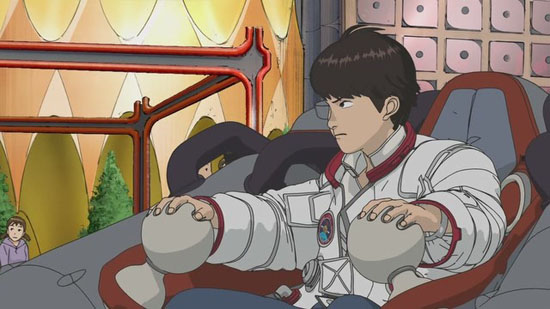
So the show was called Freedom, the player was called “Freedom,” they wanted something sexy to pimp at the electronics show, they said “let’s get the Akira guy to make us something cool.” People only ever thought of it as “like, is that the ramen show about eating noodles?” They do eat noodles in it. A lot. And there’s a lot of product placement. But it’s relevant to the story in a really cool way, actually, and then there’s lots of racing. So people, when they originally saw it, thought “oh, it’s dudes on bikes, eating noodles. It’s like Akira but with noodles.” And also, it was written by Dai Sato, who wrote Cowboy Bebop and some other shows. I think he’s an amazing writer. Even the Tekken movie he recently wrote, Blood Vengeance, has the great idea to be a fighting game movie that’s not about a tournament. Brilliant!
But yeah, Freedom made me feel like I did renting anime from Tokyo Video. It had been a long time since I’d felt so compelled to watch the next episode. It’s a seven-part OVA, now available on Blu-ray, which is uh… ironic. But it didn’t get a lot of promotion, and I think it’s really, really good.
What else… Frankly, I think Gundam Unicorn should be seen by more people. It’s an extraordinarily difficult process, and I’ve met some kids who were like “oh, I downloaded it when it came out in Japan.” And it came out globally on the same day, so I mean… what? It’d be nice if more people knew about what we were going through on that, and it’s kind of like voting with your dollar. If Sunrise thinks this will work, other studios will follow suit. We’ll get anime faster and better, and I mean, it’s doing well domestically, but over here? Not like it should. Oh, what else?! Um, um…
If you buy GaoGaiGar, they’ll make more!


